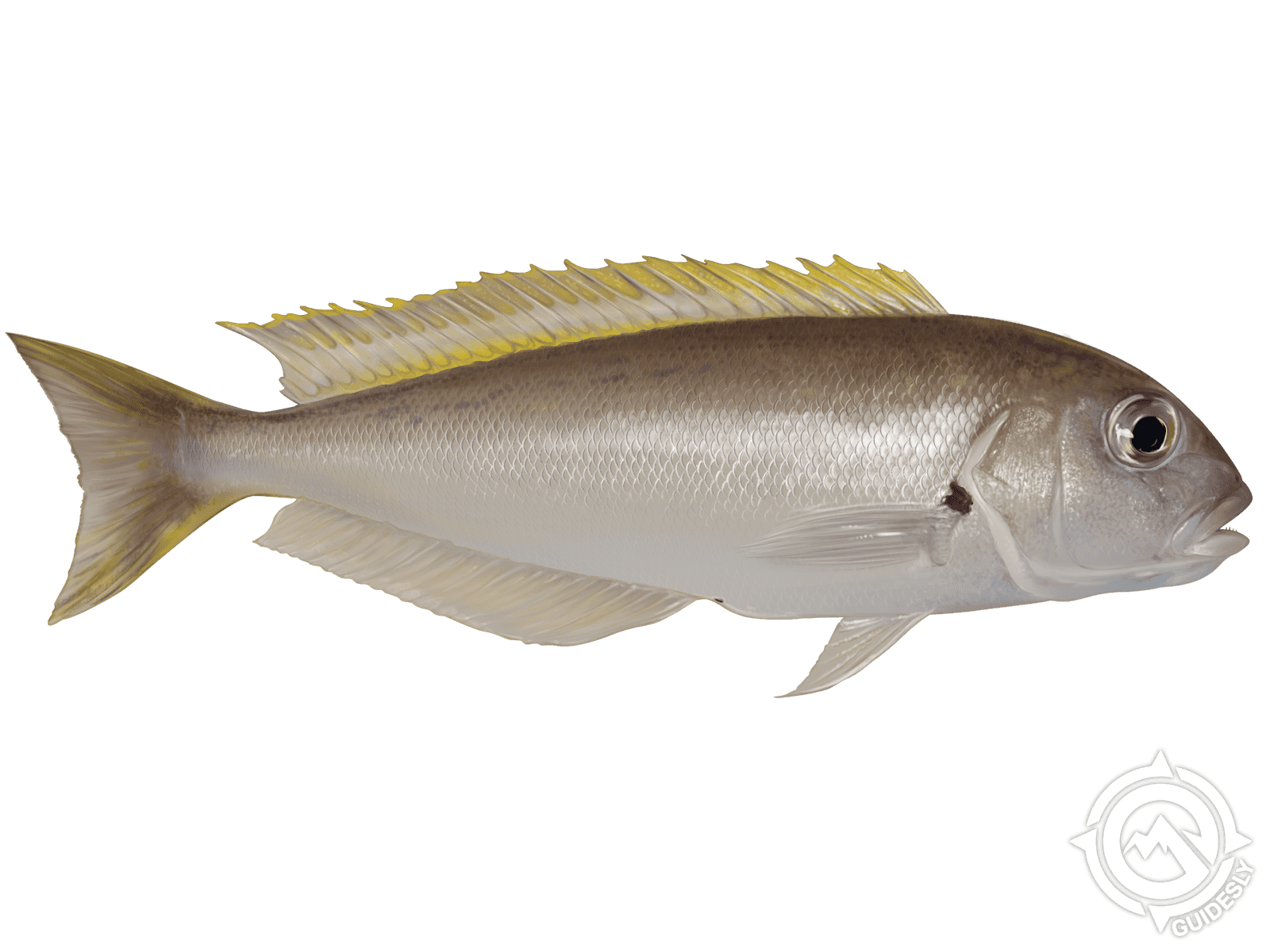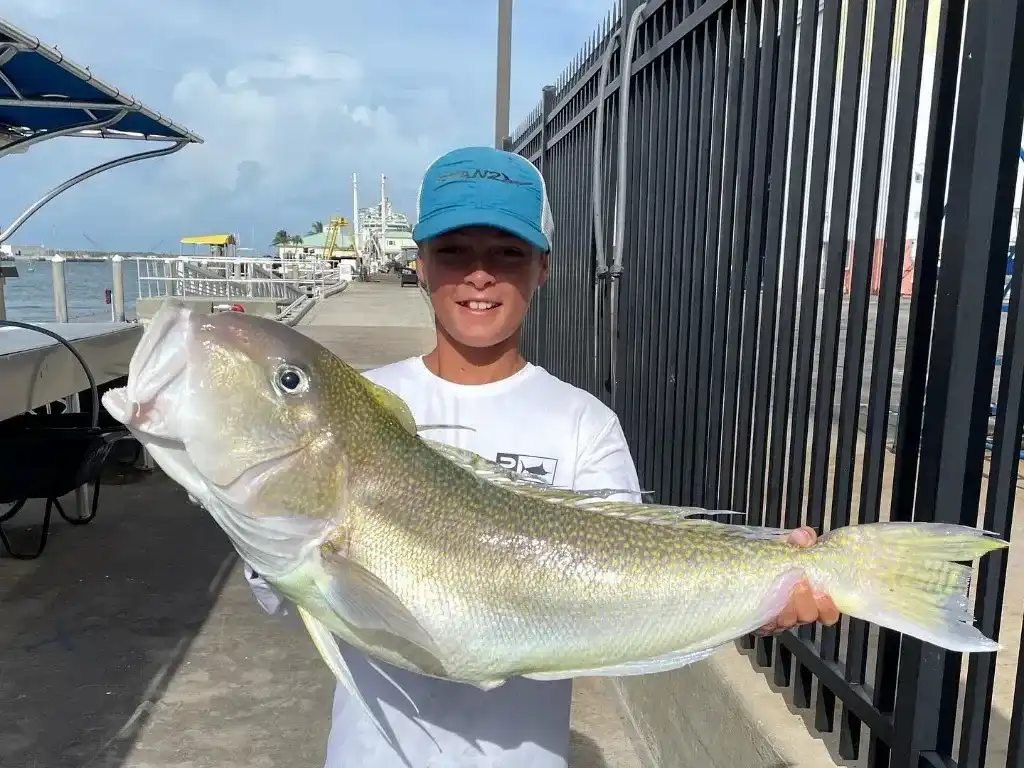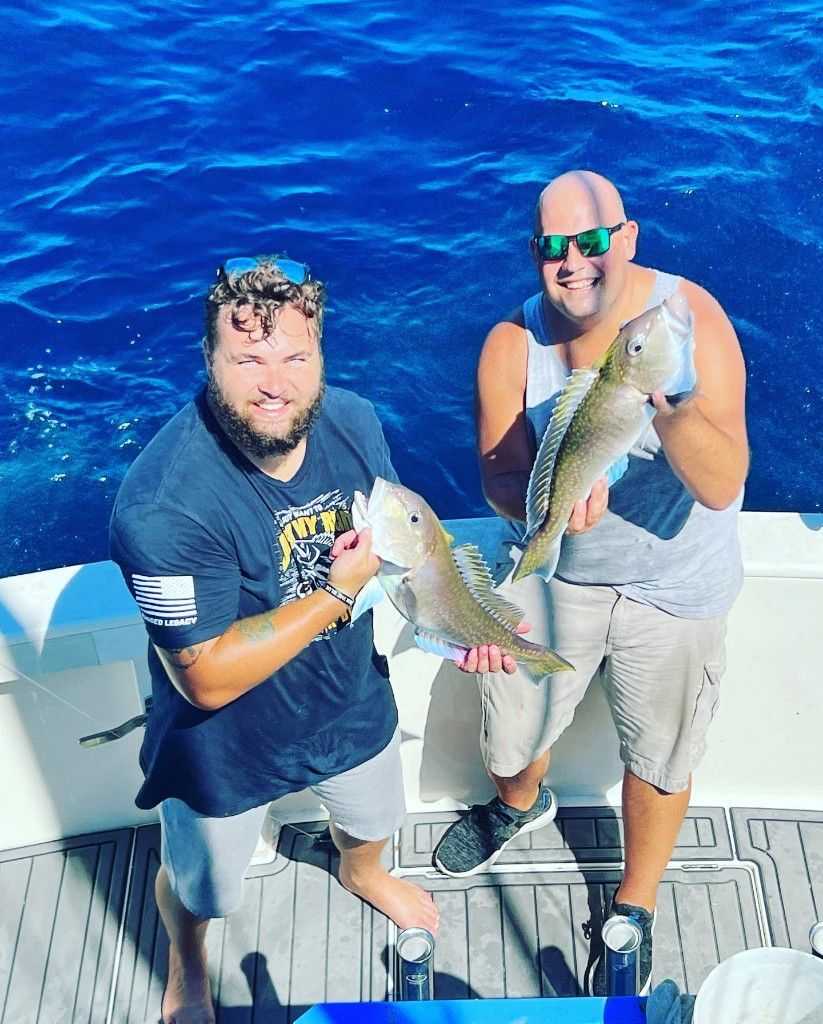Atlantic Goldeneye Tilefish

Species Details
Caulolatilus Chrysops
Malacanthidae
Perciformes
Offshore, Reef, Wreck
40 - 65 lbs.
24" - 44"
What kind of fish is the Atlantic Goldeneye Tilefish?
Reaching up to 44 inches in length, the great northern tilefish, otherwise known as the golden tile, is the biggest fish of the Malacanthidae family. Not only does it have a long lifespan, but its growth rate is also incredibly slow and can be divided into four distinct phases.
Atlantic Goldeneye Tilefish (Caulolatilus chrysops) Fish Description
The Atlantic Goldeneye Tilefish or Goldeye Tilefish is a member of the Malacanthidae family under the Caulolatilus genus. This species as well as its relatives are mostly small and found in sandy areas, especially around coral reefs. The Atlantic Goldeneye Tilefish has a long body with golden spots that contrast a dark olive green background. From the top, the Atlantic Goldeneye Tilefish has a dark olive gold-green color which slowly turns white once it reaches the belly. It has a large, rounded head, unlike other fish that have some semblance of a snout.
The Atlantic Goldeneye Tilfefish's dorsal fin is short in height but long in length. It covers almost half the body. The tail fin of the Atlantic Goldeneye Tilefish appears to be slightly falcate, creating a small crescent moon-like appearance. The majority of its fins range between gold and yellow in color.
Diet and Size
Atlantic Goldeneye Tilefish love to feed mainly on invertebrates like worms, snails, etc. This species of fish also prefer to feast on crustaceans like shrimp and crabs. Sometimes small fish is part of their diet, too.
The Atlantic Goldenye Tilefish is generally found to be around 24 to 39 inches. They weigh in at around 40 to 65 pounds.
Interesting Facts About the Atlantic Goldeneye Tilefish
- In Brazil, the Atlantic Goldeneye is sold as an aquarium fish.
- Pregnant or breastfeeding women are warned against eating tilefishes due to possible mercury contamination.
- The Atlantic Goldenye Tilefish belong to the genus of tilefish, Caulolatilus, which means they are generally a shallow water fish.
- Tilefish reproductive patterns and habits are not well studied; however, it is known that they spawn throughout spring and summer and are presumed that they do not guard their broods.
- Tilefish taken from the Gulf of Mexico were found to have high levels of mercury; however, tilefish found on the Atlantic Ocean may be safe to consume.
Atlantic Goldeneye Tilefish — Fishing Techniques
Atlantic Goldeneye Tilefish serve as gamefish and a popular commercial fish species. This tilefish species are generally found dwelling in the shallow areas, so they are easier to catch. Not much is researched into the Atlantic Goldeneye Tilefish, so a recommended way of fishing for this species would be the method on how you would generally catch tilefish, which is to drop a weighted fishing rig filled with freshly cut bait, preferably squids or eels.
A close relative of the Atlantic Goldeneye Tilefish would be the Grey Tilefish (Caulolatilus microps), and one of the techniques for catching this fish would be by setting up your rig to reach the bottom. Drop your cast and wait until you feel a tug. Pulling too quickly is not advised; instead wait for them to get a good bite before reeling them in. They’re not shy around baits, so it doesn’t take long before you notice that a tilefish strikes. For lures, the best ones are squid lures.
Habitat and Distribution
Atlantic Goldeneye Tilefish are generally found in saltwater. As a demersal species, they are usually found living on or near the bottom, feeding on benthic organisms. They are located at depths measuring 250 feet to 800 feet. They prefer tropical waters with temperature set at 80.6 °F.
Atlantic Goldeneye Tilefish thrive all throughout the Caribbean. They also populate the waters of Sao Paulo, Brazil, Rio de Janeiro, Antilles, Florida, and North Carolina. They belong to the genus of Caulolatilus, which are native to the Pacific and Atlantic coasts of both North and South America.








